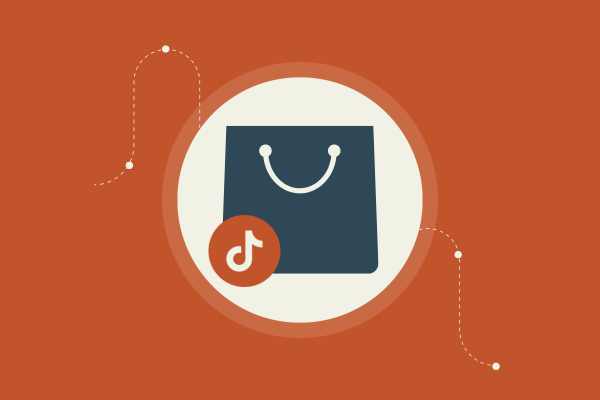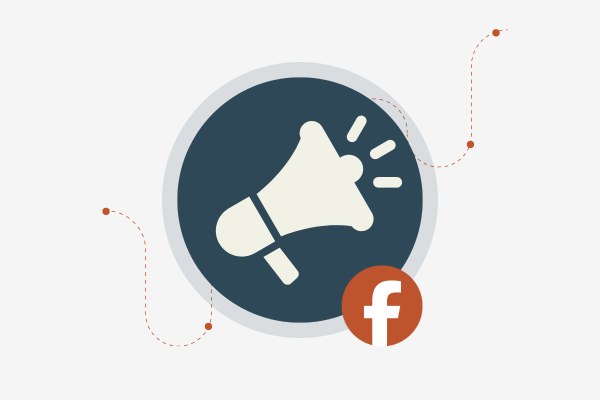How Much Does It Really Cost to Hire a Project Manager?
Hiring a project manager for your eCommerce business can be a game-changer. But you're probably wondering about the cost, right? You can expect to pay anywhere from $61 to $100 per hour on platforms like Fiverr. That can add up fast, especially if you're not prepared.
You might think that's a lot, but managing your eCommerce platform can be complex. A project manager helps keep your store running smoothly, like clockwork. They handle tasks like managing budgets, timelines, and team coordination.
Think about what this could mean for your business. Ensuring smooth operations without constant hiccups or headaches is worth its weight in gold. Let’s dive into the nitty-gritty of what goes into the cost, so you can make the right call for your eCommerce success.
Key Takeaways
Project managers can cost $61 to $100 per hour.
Managing your eCommerce can be complex without help.
Understanding costs helps maximize your investment.
The True Cost Breakdown of a Project Manager
Hiring a project manager can seem pricey, but it keeps your eCommerce business on track. You'll find out about salaries and choices between freelance or agency project managers. Get ready for some straight talk on what to expect.
What's the Deal with Project Manager Salaries?
You're diving into the costs, and salaries can surprise you. In-house project managers often earn a salary ranging from $70,000 to over $100,000 annually. This paycheck comes with benefits like health insurance, retirement plans, and paid time off. That’s a chunk of change that factors into your budget.
Why the high pay, you ask? Project managers are the glue for your business. They coordinate, plan, and execute projects with a cool head, managing resources like a pro. Their work keeps everything running smoothly and side-steps costly problems. So, investing in a solid project manager means fewer headaches and more productivity for your eCommerce hustle.
Freelance Vs. Agency Project Managers: Who Costs More?
You're deciding between freelancers and agencies. Both have different costs and perks. Freelance project managers usually charge by the hour and their rates can go from $50 to $150, depending on their experience and the project complexity. Freelancers are flexible, but you have less control over their resource management when they juggle multiple clients.
Then, there are agencies. They bring a team approach and charge a premium for their organized structure and larger resource pool. Agencies may charge you a set fee or a percentage of your project budget. Their fees might sound steep, but having a team can bring big benefits in project efficiency and execution.
Choosing between them can depend on your budget and preference for flexibility or structured support.
Core eCommerce Components and Their Costs
Your eCommerce website is only as good as the sum of its parts, from your domain name to the extensions you use. Knowing what to invest in and where to save will set you up for success.
Domain Name and Hosting: The Essentials
First up, your domain name. Think of it as your online address. Cheap isn’t always best. Aim for a .com. It’s still king in the URL world. Expect to pay about $10 to $50 a year for a good name.
Hosting is where your site lives online. Cheap hosting can lead to slow speeds and downtime. Not cool if you're running a business. Look into providers like SiteGround or Bluehost.
Don't forget an SSL certificate. It keeps your site secure. Some hosts include it in their package. That's a win. If not, budget around $10 to $100 a year for it. Worth every penny for trust and safety.
Choosing the Right Ecommerce Platforms
Let's talk platforms. You’ve got Shopify, WooCommerce, and BigCommerce among others. Each one has its own vibe. Shopify, for instance, is a breeze if you’re just starting out. It’s user-friendly but comes at a cost. Starter plans run about $29 a month.
WooCommerce is your go-to if you love WordPress. It’s open source, so technically free. But remember, there’s no free lunch. You’ll need to pay for hosting, themes, and extensions, which can add up.
BigCommerce is another player to consider. It’s great for fast-growing stores but has slightly higher pricing. Expect plans starting at $29.95 monthly. The key is picking what matches your business style.
Design Costs: Splurge or Save?
Design matters. It's the face of your brand. A DIY theme on Shopify can cost you anywhere from $0 to $180 upfront. But, hiring a designer? Now we’re talking $500 to thousands. Choose based on your brand needs.
WooCommerce gives you flexibility with themes, both free and paid. Paid themes typically cost about $50 to $100. Keep in mind, they can save you time with customization.
Custom design is not cheap, but it’s an investment. If you have the budget, consider hiring a pro to make your store truly unique. It’s about finding balance between costs and brand image.
Add-Ons and Extensions: Necessary or Not?
Last bit: extensions. They enhance your site, like giving it superpowers. With WooCommerce, extensions cover everything from SEO to shipping but add costs. Some are free, while others might set you back $30 to $300 a year.
Shopify apps offer similar perks. They charge monthly or have one-time fees, varying largely based on functionality. Decide based on your business needs.
It’s easy to get app-happy, racking up costs. Be strategic. Choose what genuinely adds value to your customer experience, not just what looks shiny and new.
Building Your eCommerce Website
When you're setting up your eCommerce website, there are a few key things to consider. Design, development, and hosting solutions all play a big role in how smoothly your site runs and how good it looks to your customers.
What Goes Into Ecommerce Website Design
Design is more than just making a site look good. It's about how easy it is for customers to move around and find what they need. You want a design that's clean and intuitive.
Think about the colors, font, and layout. They should match your brand and make users feel comfortable navigating. User experience is crucial. If it's hard to buy something, people might leave before they finish shopping.
Good design also includes mobile optimization. Many shoppers use their phones, so your site needs to work well on smaller screens. Don't forget about fast loading times. Slow sites lose customers. Invest in quality design to keep visitors coming back.
Custom Development: Is It Worth It?
Custom development means creating a website tailored specifically to your needs. It can provide a unique look and specific features that off-the-shelf solutions can't match. But it comes with a price tag.
Hiring developers to build your site means it can grow with your business. You can add features and adjust the site as needed. If you want something truly custom, it’s a long-term investment that can pay off.
This path is often more expensive upfront. It might cost anywhere from a few thousand dollars to much more, depending on the complexity. Consider if these custom features will help you stand out and increase sales. Custom might be costly, but for some, it’s totally worth it.
Self-Hosted Vs. Hosted Solutions
Choosing between self-hosted and hosted solutions is important. A self-hosted ecommerce website gives you complete control but requires more technical know-how. Platforms like WooCommerce let you customize everything. They're flexible but need regular maintenance.
On the flip side, hosted solutions like Shopify provide convenience. They handle updates, security, and hosting for you. For many, this is a great choice because it removes some of the tech headaches.
Think about your business needs. If you want control and can handle the work, self-hosted might be your path. But if you prefer to stay focused on selling, a hosted solution could be ideal. Each has benefits, yet which fits your style and goals is up to you.
The Hidden Fees of Online Selling
Running an online store isn’t just about selling products. Hidden fees can sneak up on you. These are costs that chip away at your profits. In this section, we uncover the fees lurking in payment processing, choosing a payment gateway wisely, and dealing with credit card charges. It's all about keeping more of your hard-earned money.
Payment Processing Fees: The Unseen Digits
So you’ve set up your eCommerce website. Sales are coming in. Amazing, right? But wait—have you checked out those payment processing fees? Every transaction could have a small fee.
Consider this: a customer buys a $50 item. You could pay around 2.9% plus 30 cents per transaction. That’s $1.75 gone. Just like that.
Think about how many sales you do in a day or month. Those fees add up. It's small on each transaction but big over time. Keep an eye on these silent profit-eaters.
Shopping for a Payment Gateway Without Regrets
Choosing a payment gateway is crucial. There are many out there. Stripe, PayPal, and others all want your business. Each has its unique fees and rules. So, don’t let the cool features sway you.
Compare the real costs. Look at setup fees, monthly charges, and transaction fees.
Some gateways charge a flat rate. Others have percentage-based fees. Know your business model, so the fees don’t outweigh your profit. Be wise. Don’t pick the shiny one. Pick the smart one for your needs.
Credit Cards and Processing Fees: What You Need to Know
When your customers pay by credit card, there's a cost. Credit card processing fees can be killers. You might lose 2% to 3% per transaction. Yikes!
Sometimes, these fees vary based on the card type. Rewards cards can cost you more. Your budget can take an unseen hit.
To manage these costs, know your rates. Some platforms like Shopify and WooCommerce offer insights into average costs. Check your invoice regularly. Always know where your money’s going. Small changes in your plan can save big bucks over a year. Watch those fees closely to keep them from eating your profits alive.
Ongoing Costs to Consider
Running an eCommerce business is like managing a house. You've got to keep things clean and update stuff regularly. From maintaining your website to updating your inventory, ongoing costs can surprise you if you're not ready.
Website Maintenance: Keeping the Shop Tidy
Keeping your eCommerce website running smoothly isn't a once-and-done task. It's like cleaning up after a party—it requires regular attention. First up, there's the cost of website maintenance. This includes fixing bugs, improving security, and ensuring the site stays fast and user-friendly.
Then there are the hosting costs. Depending on your provider, this can range from $80 to $730 monthly. Add in domain registration fees, and you're looking at a recurring expense. Plus, you'll want to consider any necessary add-ons and extensions that enhance functionality. These can be vital for customization but add to the bill.
Updating Your Inventory Management: Not Just Counting Beans
Inventory isn't just about counting products. It's about efficiency and accuracy. You need a reliable system to track stock levels, and this means ongoing costs for good inventory management software. Keeping your inventory updated ensures customers don't get grumpy when items are out of stock or mislisted.
Add software subscriptions or licensing fees and you're adding layers to the cost. Some systems even offer valuable integrations with accounting or eCommerce platforms. These aren't free but can save time and effort. Managing inventory is all about keeping things flowing so sales don't hit a snag!
Maximizing Your Investment
When you hire a project manager for your eCommerce business, you want to ensure you're getting the most bang for your buck. That means using the right digital marketing tools and acing your Search Engine Optimization (SEO) game. Let's dig into this.
The Cool Kids of Digital Marketing Tools
To maximize your investment, you need the right tools. These tools help your project manager kick things into high gear. Think of them as the secret weapons in your marketing arsenal.
Tools like Google Analytics and SEMrush help you get insights into customer behavior. They track where your traffic is coming from and what buyers are clicking on. This data is gold. Use it to tweak your strategies and boost sales.
Don't forget about email marketing platforms. Tools like Mailchimp or Klaviyo can automate customer emails. This keeps your audience engaged and coming back for more. An effective email strategy strengthens customer loyalty and enhances sales.
Then there are tools for social media marketing. Platforms like Hootsuite or Buffer let you schedule posts and analyze performance. Your brand stays visible without you having to be online 24/7. This means more eyes on your products and more potential buyers.
Search Engine Optimization: Playing Hide and Seek with Google
SEO is the game changer. It helps you get found on Google without paying tons for ads. It's like playing hide-and-seek, but you don't want to be the one hiding.
Start with the basics: keywords. Your project manager should work with content creators to find what terms your customers search for. Tools like Ahrefs or Moz help in discovering hot keywords.
Next up, focus on on-page SEO. Easy wins here include improving website speed and ensuring your site is mobile-friendly. Google loves fast, responsive sites and rewards them by showing them higher in search results.
Don't overlook backlinks. These are links from other sites to yours, building your website’s credibility. A good project manager will reach out to reputable sites and build relationships, getting those quality links pointing back to your store.
Navigating SEO is tricky. When you do it right, it drives free, organic traffic to your business. Your investment in a project manager who knows SEO well pays off with every visitor who finds their way to your store.







